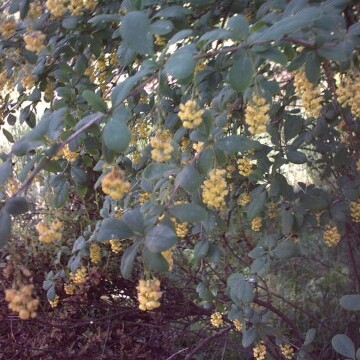Erect, rather sparsely branched, 1–2 m; younger twigs mostly purple, brown, or reddish; lvs obovate to spatulate, 2–6 cm, coarsely spinulose-dentate, the veinlets indistinct beneath; racemes 2–4 cm, with 5–10 fls; pet notched at the tip; fr nearly 1 cm; 2n=28. Rocky woods; mts. of Va. and W.Va. to Ga. and Ala.; Mo. and Ind. May.
A shrub. It grows 1.8 m high. The branches are purple or brown. The leaves have wide teeth. The leaves are 7.5 cm long. There a thorns with 3 prongs. The flowers are yellow. The fruit are red berries. The fruit are 9 mm wide.

